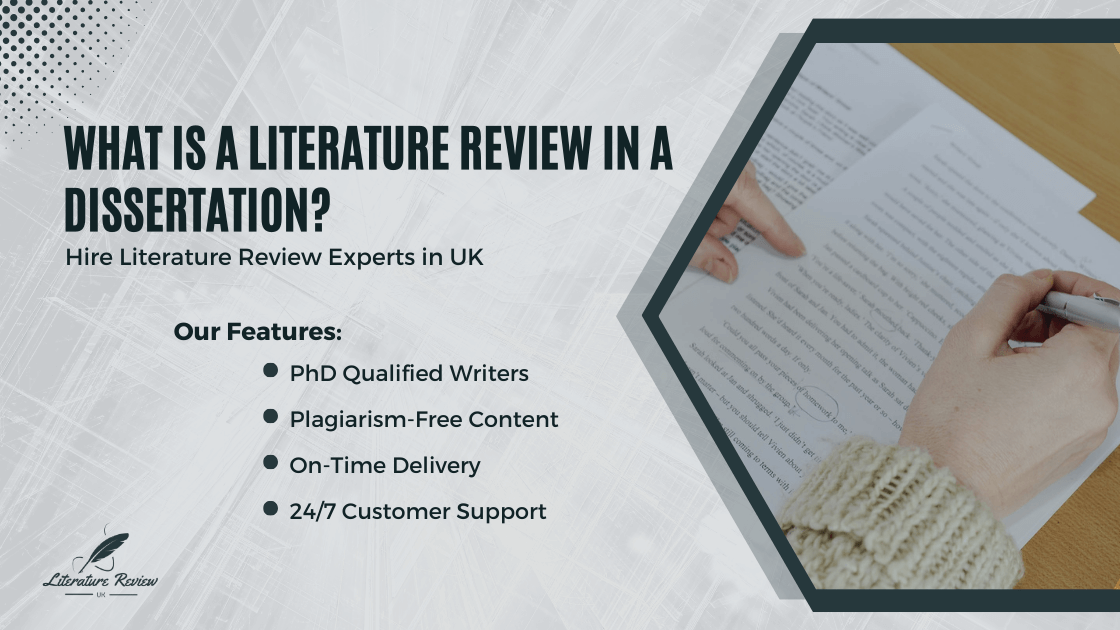
Are you struggling to write your dissertation literature review? Unlock the power of the literature review with this comprehensive guide to dissertation success.
A literature review is a critical component of any dissertation, but it can often be challenging to navigate. This article will provide you with all the tools and insights you need to craft a compelling and effective literature review that will impress your professors and contribute to the advancement of your field.
Whether you are just starting your dissertation or are in the midst of writing, this guide will walk you through the process step by step. From conducting comprehensive research to organizing your sources and analyzing the information, we will cover everything you need to know to unlock the power of the literature review.
By the end of this guide, you will have a clear understanding of how to write a literature review that not only meets the highest academic standards but also showcases your ability to critically evaluate existing research and contribute new insights. Get ready to take your dissertation to the next level with the power of the literature review.
Importance of the literature review in a dissertation
The literature review plays a crucial role in a dissertation as it provides a comprehensive overview of existing research and knowledge on a particular topic. It serves as the foundation upon which your research is built and helps establish the significance and relevance of your study.
A well-executed literature review demonstrates your understanding of the current state of knowledge in your field and allows you to identify gaps or areas for further investigation. It also allows you to situate your research within the larger academic context and shows how your work contributes to the existing body of knowledge.
Furthermore, a literature review helps you to identify and critically evaluate different methodologies, theories, and concepts that have been used in previous studies. This allows you to select the most appropriate approach for your own research and helps you avoid duplicating previous work.
In summary, the literature review is not just a mere summary of existing research. It is a critical analysis that showcases your ability to synthesize information, evaluate the strengths and weaknesses of previous studies, and identify the research opportunities that lie ahead.
Understanding the purpose of the literature review
Before delving into the process of conducting a literature review, it is crucial to understand its purpose. A literature review serves several key purposes in a dissertation:
- Establishing the context: A literature review provides the necessary background information and context for your research. It helps readers understand the current state of knowledge in your field and why your study is significant.
- Identifying gaps in existing research: By reviewing the literature, you can identify areas that have not been thoroughly explored or require further investigation. This enables you to position your research as a valuable contribution to the field.
- Evaluating existing research: A literature review allows you to critically analyze the strengths and weaknesses of previous studies. This helps you identify the limitations of existing research and highlights the need for your own study.
- Developing research questions and hypotheses: Through a thorough examination of the literature, you can refine your research questions and develop hypotheses. This ensures that your study addresses relevant gaps and contributes to the advancement of knowledge.
- Informing your research methodology: The literature review helps you select the most appropriate research methodology for your study. By understanding the methodologies used in previous research, you can make informed decisions about your own approach.
- To unlock the power of the literature review, it is essential to keep these purposes in mind throughout the process of conducting and writing your review.
Steps to conduct a comprehensive literature review
Conducting a comprehensive literature review requires careful planning and execution. Follow these steps to ensure that your review is thorough and effective:
- Define your research question: Start by clearly defining the research question or topic you want to investigate. This will guide your literature search and help you stay focused throughout the review process.
- Identify relevant databases and sources: Determine the key databases, journals, and other sources that are most relevant to your research question. Consult with your advisor or librarian for guidance on selecting the appropriate resources.
- Develop search strategies: Develop a comprehensive search strategy using keywords and Boolean operators to maximize the relevance of your search results. Consider using advanced search techniques such as truncation and proximity operators for more precise results.
- Conduct the literature search: Execute your search strategy and retrieve relevant articles, books, and other sources. Keep track of your search results using a citation management tool or a spreadsheet to ensure that you can easily reference them later.
- Evaluate and select sources: Carefully evaluate the sources you have retrieved to determine their quality, relevance, and applicability to your research question. Consider factors such as the author’s credentials, the publication’s reputation, and the methodology used in the study.
- Organize and synthesize information: Once you have selected your sources, organize them in a logical manner to facilitate the synthesis of information. Consider using a systematic approach such as thematic analysis or chronological ordering to structure your review.
- Analyze and interpret the findings: Analyze the information you have gathered from the selected sources and identify key themes, trends, and gaps in the existing literature. This will enable you to draw meaningful conclusions and develop your own research objectives.
By following these steps, you can ensure that your literature review is comprehensive, well-structured, and provides a solid foundation for your dissertation research.
Effective strategies for searching and evaluating sources
Searching for relevant sources and evaluating their quality is a crucial aspect of conducting a literature review. Here are some effective strategies to help you maximize the efficiency and effectiveness of your search:
- Use a combination of keywords and subject headings: When searching databases, use a combination of relevant keywords and subject headings to capture a wide range of relevant sources. Subject headings can help you identify articles that may not have used your specific keywords but are still relevant to your research.
- Utilize citation chaining: When you find a relevant source, examine its reference list to identify additional sources that may be useful for your review. Similarly, look for articles that have cited the source you found to identify more recent research that builds upon it.
- Consult with experts: Reach out to experts in your field or your advisor for recommendations on key sources or literature that may not be easily discoverable through traditional search methods. They may be aware of unpublished works, conference papers, or obscure journals that could be valuable to your review.
- Consider publication bias: Be aware of publication bias, which refers to the tendency of researchers and journals to publish positive or statistically significant results more frequently than negative or non-significant results. Consider including sources that present conflicting or null findings to provide a balanced perspective in your literature review.
- Critically evaluate the sources: When evaluating sources, consider the author’s credentials, the publication’s reputation, and the methodology used in the study. Assess the validity, reliability, and generalizability of the findings and determine if the source contributes to your research question.
- Keep track of your sources: Use a citation management tool or a spreadsheet to keep track of the sources you have retrieved, including relevant details such as the author, title, publication, and year. This will help you easily reference and cite the sources in your literature review.
By employing these strategies, you can enhance the efficiency and effectiveness of your literature search, ensuring that you retrieve the most relevant and high-quality sources for your review.
Organizing and synthesizing information in the literature review
Organizing and synthesizing the information you have gathered from the literature is essential for creating a coherent and impactful literature review. Here are some effective strategies to help you organize and synthesize your findings:
- Develop a clear structure: Start by outlining the main sections of your literature review based on the themes or subtopics that have emerged from your analysis. This will provide a logical structure that guides readers through your review.
- Group sources by themes: Organize your sources into groups based on the themes or subtopics they address. This will allow you to discuss similar findings and concepts together, making it easier for readers to follow your argument.
- Provide a concise summary of each source: For each source you include in your review, provide a brief summary that highlights the main findings, methodologies, and key arguments. This will help readers understand the relevance and contribution of each source to your review.
- Identify key trends and patterns: Analyze the information from your sources to identify common themes, trends, and patterns in the literature. This will enable you to synthesize the findings and draw meaningful conclusions that contribute to your research objectives.
- Highlight gaps and controversies: Identify gaps in the existing literature and areas of controversy or disagreement among researchers. Discuss these gaps and controversies in your literature review, highlighting the need for further research and the unique contribution of your study.
- Use effective transitions: Ensure smooth transitions between paragraphs and sections to create a cohesive flow throughout your literature review. Use transition words and phrases to connect ideas and guide readers through your argument.
By organizing and synthesizing your findings in a clear and logical manner, you can create a literature review that is not only informative but also engaging and persuasive.
Common challenges and how to overcome them
Writing a literature review can be challenging, but being aware of common pitfalls and adopting effective strategies can help you overcome these challenges. Here are some common challenges faced during the literature review process and how to tackle them:
- Information overload: With an abundance of literature available, it can be overwhelming to sift through and analyze the vast amount of information. To overcome this challenge, establish clear search criteria, prioritize relevant sources, and focus on the most significant findings and concepts.
- Lack of focus: It is crucial to maintain a clear focus throughout your literature review to ensure that it aligns with your research question. Regularly revisit your research question and objectives to stay on track and avoid including irrelevant or tangential information.
- Inadequate critical analysis: A literature review should not be a mere summary of sources, but a critical analysis that evaluates the strengths and weaknesses of previous studies. To overcome this challenge, engage in a deep examination of the literature, critically evaluating the methodology, limitations, and implications of each source.
- Difficulty in integrating sources: Integrating diverse sources into a coherent narrative can be challenging. To overcome this, identify common themes and arguments across sources and use effective transitions to connect ideas. Consider using subheadings to guide readers through different sections of your literature review.
- Time management: Conducting a comprehensive literature review takes time, and it is easy to underestimate the time required. Create a realistic timeline and allocate dedicated periods for literature search, reading, and writing. Break down the process into smaller tasks to make it more manageable.
- Writer’s block: Writer’s block can be a common obstacle when writing a literature review. If you find yourself stuck, take a break, engage in other activities, or discuss your ideas with colleagues or your advisor. Consider freewriting or brainstorming to generate new ideas and overcome writer’s block.
By recognizing and addressing these challenges, you can navigate the literature review process more effectively, ensuring that you produce a high-quality and impactful review.
Writing the literature review section of your dissertation
Writing the literature review section of your dissertation requires careful attention to detail and proper structuring to effectively convey your findings. Here are some tips to help you write an exceptional literature review:
- Start with a strong introduction: Begin your literature review with a compelling introduction that provides an overview of the topic, establishes the context, and highlights the significance of your research question. Engage readers with a captivating opening that hooks their attention.
- Provide a clear organizational structure: Structure your literature review in a logical and coherent manner, using subheadings and paragraphs to create a clear hierarchy. Ensure that each paragraph focuses on a specific theme or subtopic and relates back to your research question.
- Use clear and concise language: Write in clear and concise language to ensure that your ideas are communicated effectively. Avoid jargon and unnecessary technical terms, and define any specialized terms you do use. Aim for a balance between simplicity and academic rigor.
- Cite and reference accurately: Properly cite all sources and provide accurate references using the appropriate citation style required by your institution or field. Be consistent in your citation style throughout your literature review to maintain professionalism and academic integrity.
- Engage in critical analysis: Analyze and critically evaluate each source, highlighting the strengths, weaknesses, and limitations of previous studies. Discuss the implications of the findings and how they relate to your research question, showcasing your ability to think critically and contribute new insights.
- Highlight connections and gaps: As you discuss each source, highlight connections and relationships between different studies. Identify gaps in the literature and explain how your research aims to address these gaps. This demonstrates the originality and significance of your study.
- Conclude with a strong summary: End your literature review with a concise summary that reinforces the main findings, highlights the contributions of your study, and identifies avenues for future research. Leave readers with a lasting impression of the importance and impact of your literature review.
By following these tips, you can write a literature review that is well-structured, well-written, and effectively communicates your research objectives and contributions.
Tips for presenting your literature review effectively
Presenting your literature review effectively is crucial to engage your readers and convey the significance of your research. Here are some tips to help you deliver a compelling presentation of your literature review:
- Consider the format: When presenting your literature review, consider the format that best suits your audience and purpose. Whether it is a written document, a PowerPoint presentation, or a verbal presentation, adapt your content and style accordingly.
- Create a visually appealing layout: If you are presenting your literature review in a visual format, such as a PowerPoint presentation, create a visually appealing layout that enhances the readability of your content. Use appropriate fonts, colors, and images to engage your audience.
- Use effective visuals: Incorporate relevant visuals such as graphs, charts, or diagrams to convey complex information more effectively. Visuals can help illustrate key trends, relationships, and concepts, making your literature review more engaging and memorable.
- Practice your delivery: If you are delivering a verbal presentation, practice your delivery to ensure a smooth and confident presentation. Pay attention to your tone, pace, and body language, and be prepared to answer questions and engage in discussions.
- Focus on key points: When presenting your literature review, focus on the key points, findings, and contributions. Avoid overwhelming your audience with
Conclusion: The role of the literature review in contributing to dissertation success
A literature review serves as a foundation for your dissertation by providing a comprehensive overview of the existing research and knowledge in your field. It allows you to identify gaps in current knowledge, establish the context for your research, and demonstrate your understanding of the subject matter.
To begin, start by clearly defining your research question or objective. This will help you narrow down your search and ensure that you are only including relevant sources in your literature review. Once you have a clear focus, you can start searching for scholarly articles, books, and other credible sources that will contribute to your literature review.
When conducting your research, be sure to critically evaluate each source to determine its quality and relevance to your topic. Look for sources that are peer-reviewed, up-to-date, and written by reputable authors in your field. This will ensure that the information you include in your literature review is reliable and accurate.




